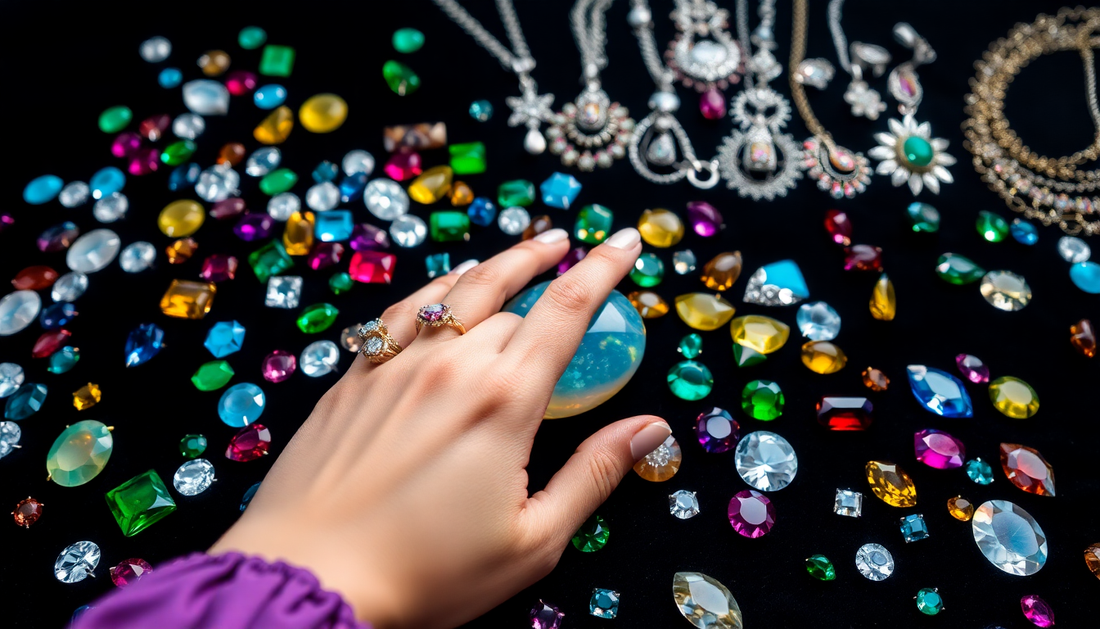
Can All Gemstones Be Worn as Jewelry?
Share
As a leading trader in natural gemstones, minerals, and jewelry accessories, Natural Gems Belgium is often asked whether all gemstones can be worn as jewelry. The answer to this question is not a simple yes or no, as there are several factors to consider when selecting gemstones for jewelry.
The Durability of Gemstones
One of the primary factors to consider when choosing gemstones for jewelry is their durability. Gemstones can vary greatly in their hardness, which is measured on the Mohs Hardness Scale. This scale ranges from 1 (the softest) to 10 (the hardest), and it's an important indicator of a gemstone's ability to withstand daily wear and tear.
Diamonds, for example, are the hardest gemstone, ranking 10 on the Mohs Scale. This makes them an excellent choice for rings, earrings, and other jewelry that will be subjected to regular use and contact with other surfaces. On the other hand, softer gemstones, such as Opal (5-6.5 on the Mohs Scale) or Fluorite (4 on the Mohs Scale), are more prone to scratches, chips, and other types of damage, and may not be suitable for everyday wear.
Gemstone Clarity and Inclusions
Another factor to consider when selecting gemstones for jewelry is their clarity and the presence of inclusions. Inclusions are small imperfections or foreign materials within the gemstone, and they can affect the stone's appearance, durability, and overall value.
Gemstones with a high degree of clarity, such as flawless or eye-clean diamonds, are generally more desirable for jewelry, as they have a more consistent and attractive appearance. Gemstones with visible inclusions, on the other hand, may be more prone to cracking or breaking under stress, and may not be the best choice for high-wear jewelry items.
Gemstone Color and Cut
The color and cut of a gemstone can also play a significant role in its suitability for jewelry. Certain gemstones, such as Emeralds, are known for their vibrant, distinctive colors, which can make them a stunning choice for jewelry. However, the cut of the gemstone is also important, as a poorly cut stone may not display its color to its full potential.
Additionally, some gemstones, such as Amethyst or Citrine, can fade or change color when exposed to prolonged sunlight or heat. This can be a consideration for jewelry that will be worn in outdoor or high-heat environments.
Gemstone Hardness and Jewelry Placement
The hardness of a gemstone can also influence where it is best suited for use in jewelry. Harder gemstones, such as Diamonds or Rubies, are generally more suitable for rings, earrings, and other jewelry that will be subjected to regular contact with other surfaces. Softer gemstones, on the other hand, may be better suited for pendants or other jewelry that will have less direct contact with other objects.
It's also important to consider the placement of the gemstone within the jewelry piece. For example, a softer gemstone may be better suited for a pendant or earring, where it is less likely to be subjected to direct pressure or impact, compared to a ring, where it may be more prone to chipping or cracking.
Conclusion
In conclusion, while many gemstones can be used in jewelry, not all gemstones are equally suitable for all types of jewelry. Factors such as hardness, clarity, color, and cut must be carefully considered when selecting gemstones for jewelry. By understanding these factors, jewelry makers and consumers can make informed choices that will ensure the longevity and beauty of their gemstone jewelry.
At Natural Gems Belgium, we pride ourselves on our extensive knowledge of gemstones and their properties, and we are committed to helping our customers make the best choices for their jewelry needs. Whether you're looking for faceted gemstones, rough gemstones, tumbled stones, or carved jewelry accessories, we have a wide selection of high-quality, certified natural gemstones to choose from.
Gemstone Hardness and Jewelry Suitability
Here is a general guide to the suitability of different gemstones for various types of jewelry:
Rings
- Diamonds, Rubies, Sapphires, Topaz, Quartz (including Amethyst and Citrine)
- These harder gemstones (7-10 on the Mohs Scale) are well-suited for rings, as they can withstand the daily wear and tear of daily use.
Earrings
- Diamonds, Rubies, Sapphires, Topaz, Quartz
- Harder gemstones are a good choice for earrings, as they are less likely to be damaged by daily wear.
- Softer gemstones, such as Opal or Fluorite, may be better suited for earrings that are not worn as frequently.
Pendants
- Softer gemstones, such as Opal, Fluorite, or Turquoise, may be better suited for pendants and bracelets, as they are less likely to be subjected to direct impact or pressure.
Bracelets
- Harder gemstones can also be used in these types of jewelry, but may require more care and attention to prevent damage.
Necklaces
- A wide range of gemstones, both hard and soft, can be used in necklaces, as they are generally less prone to direct impact or pressure.
- However, softer gemstones may still require more care and attention to prevent damage over time.
By understanding the unique properties and characteristics of different gemstones, jewelry makers and consumers can make informed choices that will ensure the longevity and beauty of their gemstone jewelry. At Natural Gems Belgium, we are committed to providing our customers with the highest quality natural gemstones and the knowledge they need to make the best choices for their jewelry needs.